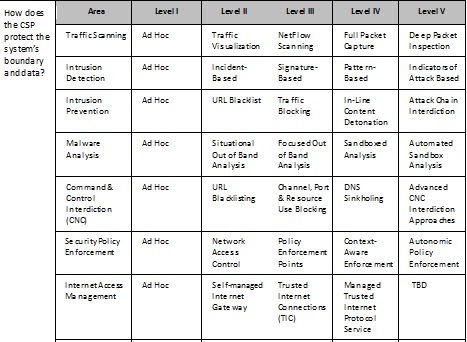The Weekend Reader–June 17
Exclusive: VA Spending on Mobile Apps and VistA Enhancements Violated Appropriations Law
 The laws in question prohibit the use of medical care support and services funding for anything other than expenses related to inpatient and outpatient care, medical supplies and equipment, prescription drugs, and nursing homes, as well as caregiver assistance and health care employee salaries. “Of the approximately $51.9 million, VA spent $39.1 million in questioned costs on IT development and enhancement activities instead of medical care and administrative activities,” the IG report states. VHA planned to use mobile health applications on devices such as BlackBerrys, iPhones, and iPads so that doctors and nurses could access medical information and enhance communication with caregivers.
The laws in question prohibit the use of medical care support and services funding for anything other than expenses related to inpatient and outpatient care, medical supplies and equipment, prescription drugs, and nursing homes, as well as caregiver assistance and health care employee salaries. “Of the approximately $51.9 million, VA spent $39.1 million in questioned costs on IT development and enhancement activities instead of medical care and administrative activities,” the IG report states. VHA planned to use mobile health applications on devices such as BlackBerrys, iPhones, and iPads so that doctors and nurses could access medical information and enhance communication with caregivers.
BYOD Challenges Higher Ed Security
 Higher education students bring their own devices onto campus, causing universities and colleges to re-evaluate their security and access structure. Campuses now oversee identity and security life cycle management. Mehran Basiratmand of Florida Atlantic University refers to it as a “whole paradigm shift.” And limiting students’ access to resources would affect their educational experience, leaving higher ed institutions to adjust their security postures.
Higher education students bring their own devices onto campus, causing universities and colleges to re-evaluate their security and access structure. Campuses now oversee identity and security life cycle management. Mehran Basiratmand of Florida Atlantic University refers to it as a “whole paradigm shift.” And limiting students’ access to resources would affect their educational experience, leaving higher ed institutions to adjust their security postures.
States Unite to Save Big Bucks on Cloud Services
 Utah is expected to issue a National Association of State Procurement Officials cloud computing contract in August that helps states get the best deal for equipment and software by bundling their shopping lists into a single bid. “Savings results from volume discount pricing received from the combined purchasing power of multiple states joining together and from reduced administrative overhead resulting from one procurement being conducted for and in benefit of all participating states,” said Kent Beers of Utah. Finding efficient cloud services is on the minds of many state purchasing officers as their terabytes of data continue to explode, and they have no secure place to store the information. New Mexico and Idaho are two of the 36 states that have signed letters of intent to participate in the contract.
Utah is expected to issue a National Association of State Procurement Officials cloud computing contract in August that helps states get the best deal for equipment and software by bundling their shopping lists into a single bid. “Savings results from volume discount pricing received from the combined purchasing power of multiple states joining together and from reduced administrative overhead resulting from one procurement being conducted for and in benefit of all participating states,” said Kent Beers of Utah. Finding efficient cloud services is on the minds of many state purchasing officers as their terabytes of data continue to explode, and they have no secure place to store the information. New Mexico and Idaho are two of the 36 states that have signed letters of intent to participate in the contract.
Government IT Modernization Plan At Turning Point
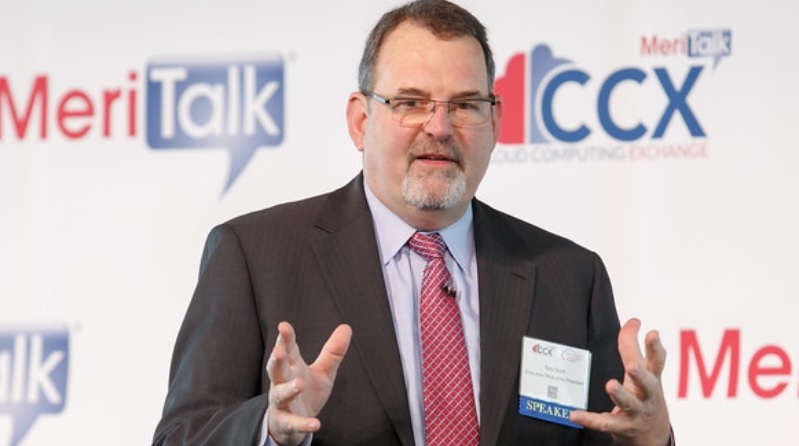 Time may be running out on the Federal government’s plan to replace and modernize billions of dollars’ worth of legacy IT systems—some of which date back more than 40 years and control critical programs, including the U.S. military’s nuclear arsenal. The money would serve as a revolving capital fund that agencies would apply for and use to upgrade and replace the billions of dollars’ worth of outdated computer systems. A detailed business case would be required for each disbursement, and agencies would be required to pay back any money realized from savings.
Time may be running out on the Federal government’s plan to replace and modernize billions of dollars’ worth of legacy IT systems—some of which date back more than 40 years and control critical programs, including the U.S. military’s nuclear arsenal. The money would serve as a revolving capital fund that agencies would apply for and use to upgrade and replace the billions of dollars’ worth of outdated computer systems. A detailed business case would be required for each disbursement, and agencies would be required to pay back any money realized from savings.
The Situation Report: Great Scott Round II; Federal CIOs on the Move
Federal CIO Tony Sc ott’s keynote July 14 at the Palo Alto Networks Federal Forum will come at a critical point in his effort to champion the revolving capital fund. If legislation supporting the fund is introduced as planned before the July 4 holiday, Scott’s appearance at the Federal Forum will be an important opportunity to push it across the goal line. That’s why MeriTalk has launched the #GreatScott campaign—an online petition to keep Scott in office through the transition of administrations.
ott’s keynote July 14 at the Palo Alto Networks Federal Forum will come at a critical point in his effort to champion the revolving capital fund. If legislation supporting the fund is introduced as planned before the July 4 holiday, Scott’s appearance at the Federal Forum will be an important opportunity to push it across the goal line. That’s why MeriTalk has launched the #GreatScott campaign—an online petition to keep Scott in office through the transition of administrations.
The Situation Report: Great Scott Round II; Federal CIOs on the Move
Great Scott Round II
For those of you who missed the opportunity to hear Federal Chief Information Officer Tony Scott lay out his vision for the $3.1 billion IT modernization fund at this week’s Cloud Computing Brainstorm, you’ll have another chance on July 14 at the Palo Alto Networks Federal Forum. Scott’s keynote will come at a critical point in his effort to champion the revolving capital fund. If legislation supporting the fund is introduced as planned before the July 4 holiday, Scott’s appearance at the Federal Forum will be an important opportunity to push it across the goal line.
But time is running out, and the odds that this money will actually materialize are not good. That’s why MeriTalk has launched the #GreatScott campaign—an online petition to keep Scott in office through the transition of administrations. Scott’s presence and leadership may be the key to making the $3.1 billion modernization fund a reality.
Money Bags
My Capitol Hill listening post has picked up strong signals that there are some big piles of unused money sitting in some Federal coffers that could make the perfect seed money for Scott’s IT modernization fund. According to one source, lawmakers have their eyes on the CIA‘s private investment activities, which have reportedly paid off to the tune of about $4 billion. It wasn’t that long ago when the CIA’s investment arm, known as In-Q-Tel, invested in a company called Keyhole—an investment that blossomed into what we now know as Google Earth.
Take Your Medicine
When is a Dell tablet computer a medical device? Well, that depends on whom you ask at the Department of Veterans Affairs and who’s paying for it. For example, a tablet is a medical device—like a blood pressure monitor—if it is used to run a mobile medical app, according to the Veterans Health Administration’s Office of Connected Care. But when those tablets are purchased to replace aging desktops—clearly an IT investment—then the use of an estimated $5 million in medical funding becomes a legal problem.
My Vermont Avenue observation post in Washington, D.C., has uncovered evidence that nearly 2,000 tablet computers purchased by VHA’s Office of Connected Care have been sitting in a warehouse for the past year. Adding salt to the wound is the fact that because VA does not currently support Windows 8 or Windows 10 operating systems, those new tablets are in limbo. The Office of Connected Care, according to reports, is searching for ways to either return the tablets to the manufacturer or transfer them to the Office of Information and Technology (OI&T).
Big Apple Bound
My remote monitoring station outside the New Executive Office Building has picked up signals that Tony Scott is making travel plans. No, he’s not leaving Washington, D.C., for good (at least not yet). But he is taking all of the Federal agency CIOs on an off-site educational trek to New York City to meet with industry counterparts. Reports indicate the Feds will be in the Big Apple most of next week.
Breaking the Traditional Federal Cloud Mold: ViON’s Agile Cloud Platform (ACP) with vCloud Suite
Cloud isn’t a new concept for government. Approximately 8.5 percent – or roughly $7 billion – of the government’s IT spending goes to provisioned services like cloud[1] today.
But, even greater opportunity for savings is ahead, as agencies focus hard on legacy migration. The costs associated with maintaining outdated infrastructure have reached the impossible point. OMB’s legacy systems report, out last month, found many agencies use outdated, unsupported software languages and hardware parts.
Agencies reported using systems that have components that in some cases, are 50+ years old.
Cloud offers a migration opportunity, but navigating the skies isn’t easy. Agencies are challenged with forecasting and managing cloud budgets, and with ensuring that data is protected and secure.
Protecting constituent data is top priority as agencies consider cloud models, and keeping systems current is key. Cloud enables more frequent updates, improves overall efficiency, and helps agencies make the shift to using OpEx vs. CapEx dollars.
The ViON’s Agile Cloud Platform (ACP) with vCloud Suite software (private cloud, with JAB-based FedRAMP Provisional Authorization), for example, enables agencies to store data locally behind their firewall, access both on- and off-premises, and reduce waste by paying only for the capacity they use – addressing budget and data protection concerns.
Operating under a unique “Pay-as-you-Consume” billing model, ACP provides scalable, customized capacity to migrate and manage sensitive data.
Importantly, the implementation is modular. IT teams select and implement what they need, adding services into their portfolio as their mission evolves, and as they build success with initial cloud service offerings.
The ACP with vCloud Suite also enables Federal IT teams to:
- Monitor the environment and perform self-healing tasks based on well-defined scripts
- Connect to public cloud providers and services for a hybrid cloud design, should they choose to modify
As an enterprise-class solution, the vCloud Suite comes with a vSphere hypervisor, which creates the foundation for add-on components such as vCenter Server, vCloud Automation Center, vRealize Operations Manager, and vRealize Business.
These add-on components help to make the most of the cloud offering and scale to meet changing agency workloads.
For example, with the vRealize Automation Center, agencies create and present a service catalog with available IT resources to automate processes, reduce provisioning time required by the IT team and freeing resources to work on strategic projects.
ViON’s cloud offerings provide more control with a modular migration path – that’s the real silver lining.
Learn more about flexible IT – and find out how your agency can benefit from IT on-demand.
This blog post was originally published here.
[1] https://www.whitehouse.gov/sites/default/files/omb/budget/fy2016/assets/ap_17_it.pdf
The Weekend Reader–June 10
World Oceans Day: Book Uses Data to Increase Understanding
 An e-book published to coincide with World Oceans Day hopes to bring together researchers, government agencies, students, and technology to better the understanding of the world’s oceans. Dawn J. Wright is chief scientist at Esri and editor of the second edition of Ocean Solutions, Earth Solutions, a book aimed at compiling and bettering the data surrounding ocean research.
An e-book published to coincide with World Oceans Day hopes to bring together researchers, government agencies, students, and technology to better the understanding of the world’s oceans. Dawn J. Wright is chief scientist at Esri and editor of the second edition of Ocean Solutions, Earth Solutions, a book aimed at compiling and bettering the data surrounding ocean research.
Agency Resources Help Patients Understand Rights
 Despite eight in 10 individuals who have viewed their health information online saying the information was useful, 41% of Americans have still never even seen their medical record. The ONC’s new infographic also provides a series of tips on how to gain access to and safely share medical information, including: You cannot be refused access to your health information because you haven’t paid your medical bill. Your provider is no longer responsible for the security of your health information after it is sent to a third party.
Despite eight in 10 individuals who have viewed their health information online saying the information was useful, 41% of Americans have still never even seen their medical record. The ONC’s new infographic also provides a series of tips on how to gain access to and safely share medical information, including: You cannot be refused access to your health information because you haven’t paid your medical bill. Your provider is no longer responsible for the security of your health information after it is sent to a third party.
Data Drives Personalized Learning
 Data provides parents, educators, and policymakers with the information they need to personalize and support student learning. “It’s incredibly important that the individual classroom teacher… [is] able to use data and access data to drive learning in their class,” said Chip Slaven, counsel to the president and senior advocacy adviser for the Alliance for Excellent Education. Measure what matters: Be clear about what you want to achieve for students and have the data to ensure it gets done.
Data provides parents, educators, and policymakers with the information they need to personalize and support student learning. “It’s incredibly important that the individual classroom teacher… [is] able to use data and access data to drive learning in their class,” said Chip Slaven, counsel to the president and senior advocacy adviser for the Alliance for Excellent Education. Measure what matters: Be clear about what you want to achieve for students and have the data to ensure it gets done.
The Situation Report: VA’s Culture War and CCX Brainstorm Takes Washington
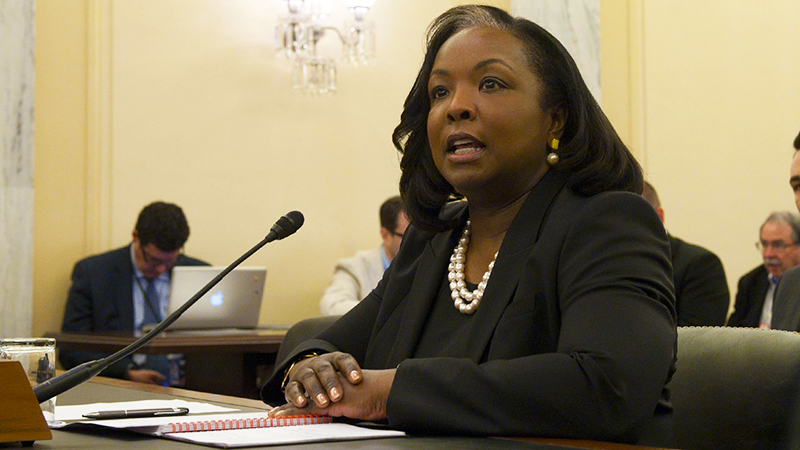 We’ll be exploring everything from cloud migration strategies and security, to agency cloud collaboration and the value of open source, and open standards. And over at VA, Bob McConald has had his missteps along the way, but he has surely tried and has made some solid progress in reforming one of the most broken of all government bureaucracies. This has been particularly true in the Office of Information & Technology.
We’ll be exploring everything from cloud migration strategies and security, to agency cloud collaboration and the value of open source, and open standards. And over at VA, Bob McConald has had his missteps along the way, but he has surely tried and has made some solid progress in reforming one of the most broken of all government bureaucracies. This has been particularly true in the Office of Information & Technology.
82% of Hospitals Electronically Exchange Medical Information, Study Shows
 In 2008, 41 percent of non-Federal, acute care hospitals electronically exchanged key medical data with outside providers; today, that number is 82%. The study defines non-Federal, acute care hospitals as any acute care general medical or surgical, general children’s, or cancer hospitals owned by private/non-for-profit, investor-owned/for-profit, or state/local government and located within the United States. The four key domains of data sharing are electronically sending, receiving, finding, and integrating or using key medical information.
In 2008, 41 percent of non-Federal, acute care hospitals electronically exchanged key medical data with outside providers; today, that number is 82%. The study defines non-Federal, acute care hospitals as any acute care general medical or surgical, general children’s, or cancer hospitals owned by private/non-for-profit, investor-owned/for-profit, or state/local government and located within the United States. The four key domains of data sharing are electronically sending, receiving, finding, and integrating or using key medical information.
What Agencies Need for a Secure Cloud Transition
IT is evolving and agency security needs are changing with it.
There needs to be a “fundamentally different way that we secure [IT] services,” said Rob Palmer, deputy chief technology officer, DHS, during a recent webcast.
“It took us a decade or more to get a good support model in place for what we are now considering legacy IT,” Palmer continued. Now agencies are hoping to transition from legacy IT to the cloud.
FedRAMP Accelerated Program Could Leave Some CPSs Behind
Earlier this spring, the Federal Risk and Authorization Management Program (FedRAMP) announced sweeping process changes in an effort to accelerate the accreditation of cloud solution providers (CSPs) to better meet agencies’ needs. The intent of the announced changes is to reduce the time and cost associated with receiving accreditation. This article will examine the potential pros and cons of FedRAMP’s new approach and discuss critical considerations for CSPs to successfully navigate the changes.
The Reported Advantages:
Speed: According to GSA, CSPs currently fill out hundreds of pages of documents and turn them over to the FedRAMP office for vetting. Currently, the vetting takes on average between three to nine months to complete just to earn the FedRAMP Ready Status. The fastest FedRAMP approval to date took five months, while most reviews are now taking nine to 18 months. The proposed FedRAMP Ready changes suggest CSPs can earn an ATO in under six months, possibly three. Needless to say, this is a fundamentally better timeline for many CSPs that need accreditation as part of their route to market.
Stronger Capability Assessments: Currently, documentation reviews are lengthy and don’t necessarily involve a direct view of the CSP’s systems and security controls. Under the proposed process, a 3PAO will provide the initial system analysis. This real-world analysis may remove some of the risks for the government of going through the program.
The inclusion of a Capability level is the strongest outcome of this change. By clearly defining the assessments for CSPs, the FedRAMP PMO could in the near future look at the success or failure of CSPs in retrospective terms. CSPs also have a clear measure how they may promote or distinguish their system.
Figure 1: FedRAMP Readiness Capability Level Factors Showcase
See https://www.fedramp.gov/provide-public-comment/draft-readiness-capabilities/
Some Potential Limitations:
Fewer accreditation options: The FedRAMP PMO is eliminating the CSP Supplied compliance path. In addition, not all CSPs will be allowed to go through the P-ATO or FedRAMP Accelerated paths anymore. The P-ATO path will likely be used less and less and if a new, innovative CSP has the opportunity to have an agency review their package, the P-ATO path may not be used at all. The CSPs that do not meet the outlined criteria will have a really hard time getting accredited or may fall behind their competitors, leaving them at a substantial market disadvantage.
Increased need for documentation and added (hidden) costs: As most companies doing business with the government know, more documentation does not necessarily equal more security. At the same time, compliance documentation increases costs to CSPs in the following areas:
- Overhead for documentation or consultant help in documentation to meet the FedRAMP standards and processes.
- Clearly, large businesses or technology innovators with deep pockets or more generous investors will more likely have fewer hurdles to the Federal market. Small businesses and new innovators are likely to struggle because they will need sufficient investment to meet capability levels prior to earning any revenue.
- Additional 3PAO costs for the CSP related to the FedRAMP Readiness Assessment Guidance (RAG).
- Additional 3PAO risks and costs for the real and potential liabilities related to attestation. This includes the liabilities a 3PAO may face from the CSP and the costs of defense related to suggested credibility issues from the FedRAMP PMO, especially if a breach or leak of CSP data occurs after having been through FedRAMP Ready.
- Potential political costs for the FedRAMP PMO if CSPs have accomplished FedRAMP Ready but are not approved or viewed by the FedRAMP PMO as worthy for selection to the P-ATO JAB process. The cost to the CSP would be frustration and inability to unplug government sales of innovative, new solutions.
Regardless of the accreditation path a CSP is taking, the FedRAMP process is all about understanding and demonstrating security and documentation due diligence. CSPs need to understand their strengths and weaknesses vis-à-vis the requirements and proactively work with their selected 3PAOs to close security gaps.
Maria Horton is CEO of EmeSec, an accredited 3PAO supporting customers in adopting the cybersecurity and risk mitigation best practices they need to build competitive advantage in today’s connected world. Since 2003, the company has been working with government and private sector organizations to help them protect their missions, reputations, and growth engines, while harnessing the power of security and automated technologies.
The Situation Report: VA’s Culture War and CCX Brainstorm Takes Washington
This is a special Tuesday Situation Report, as your humble correspondent will be traveling for the rest of the week. So for those of you who are used to reading your inside baseball on Thursdays, I apologize. But this is not one you would want to miss.
Brainstorm–June 15
The November election may be playing havoc with agency appointments and senior leadership positions, but there are two things that aren’t going away any time soon: cloud computing and the Federal Information 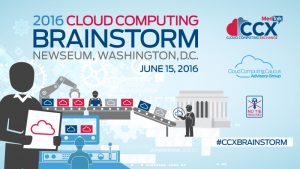 Technology Acquisition Reform Act (FITARA).
Technology Acquisition Reform Act (FITARA).
That’s not to say that things related to cloud and FITARA aren’t changing–because changing they are, and fast! But MeriTalk is hosting some of the biggest names in government IT on June 15 at the annual Cloud Computing Brainstorm. Even better, we’re opening the day with a FITARA breakfast session featuring OMB, members of Congress, and a keynote presentation from U.S. Chief Information Officer Tony Scott.
We’ll be exploring everything from cloud migration strategies and security, to agency cloud collaboration and the value of open source, and open standards.
VA’s Culture War
It’s fair to say that you have to give Bob McDonald credit for trying to turn those lemons at the Department of Veterans Affairs into lemonade. Sure, he’s had his missteps along the way, but McDonald has surely tried and has made some solid progress in reforming one of the most broken of all government bureaucracies.
But my reporting during the last two weeks has uncovered a disturbing trend–even after the ouster of former VA Secretary Eric Shinseki and the many early retirements of more than a few bad apples (retirements that should not have been allowed), there remains a major undercurrent of distrust and genuine dislike for many senior VA leaders. VA is losing the people battle. This has been particularly true in the Office of Information & Technology.
When LaVerne Council replaced Stephen Warren as VA chief information officer last July, technology newsrooms around Washington, D.C., filled with a sense of hope–an outsider was coming in to replace a career Federal employee whose management style had not won many hearts and minds.
Council squandered the opportunity. Upon her arrival, the mentality at OI&T quickly shifted in the wrong direction. “Transparency has a different meaning there. The prevailing attitude there now is that what is good for the assistant secretary is what’s good for the organization, not the other way around,” said a longtime OI&T insider, known to The Situation Report.
Those who knew Steph Warren almost long for the days when they would be left trying to figure out his social awkwardness. People just “didn’t get Steph,” said one of his former close advisers. “He has a unique personality that if you don’t know him can seem aggressive or condescending. But that was more social awkwardness. I actually thought he was an incredibly good leader and he had the best of the organization at heart. He was a good person and he worked with the best intentions.”
What about Council? The situation there is less clear. Even as recently as April, the MyVA Advisory Committee–a group of about a dozen of the most senior officials in VA, as well as Secretary McDonald and Deputy Secretary Sloan Gibson–made a point to advise Council to “embed sustainability” within her own organization rather than to complain about her staff’s lack of skills or the tendency of components to deploy “shadow IT.”
“Council is all about Council,” said a former VA official who worked for both Warren and Council. “She was personally very nice to me. But her style is management by territory building and aggressive behavior that borders on bullying. She surrounds herself with sycophants and is not open to debate.”
Some also have serious questions about the technical qualifications that Council and others, like Brian Burns—the former VA chief information security officer that The Situation Report believes may be only days away from becoming the first Federal CISO. According to some, neither Council nor Burns have an in-depth grasp of the technological aspects of their jobs.
The bottom line is this: VA’s reputation has been destroyed. It can’t fill the 43,000 job vacancies it currently has, and it can’t find senior leaders willing to join from outside the government. This has happened not because government is inept, but because this one agency allowed itself to become the place where third stringers could get ahead by jumping from one gig to the next, and where kingdom builders can get away with it as long as they have cover from the top.
McDonald can’t change this by November. After that, it’s anyone’s guess how long it will take to win the VA culture war.
See you next week.
Got a Situation Report you want to share? Send in confidence to dverton@meritalk.com
The Weekend Reader – June 3
Exclusive: VA Chief Information Security Officer Resigns
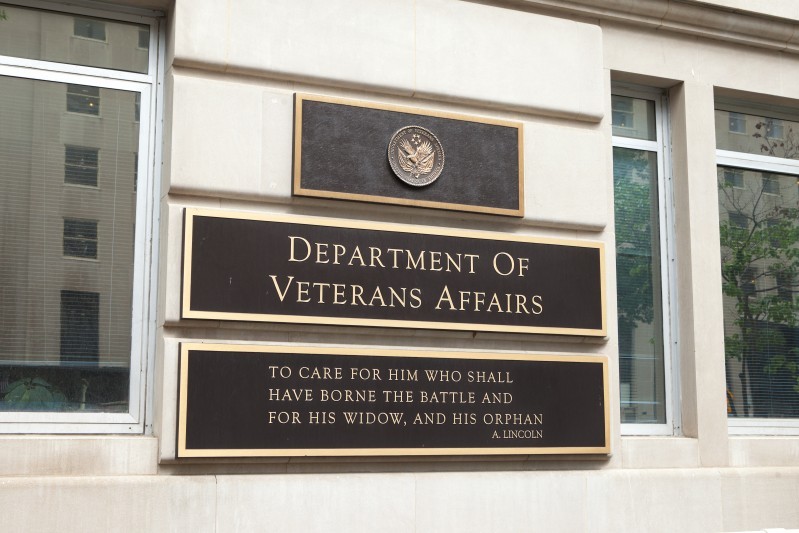 Brian Burns, the Department of Veterans Affairs’ chief information security officer, has resigned, according to an internal agency memo obtained by MeriTalk. His last day with VA will be June 10. Burns took over the CISO post last November.
Brian Burns, the Department of Veterans Affairs’ chief information security officer, has resigned, according to an internal agency memo obtained by MeriTalk. His last day with VA will be June 10. Burns took over the CISO post last November.
The Situation Report: Is This The New Federal CISO?
 Burns first entered Federal service in 1997, after a 13-year stint in commercial IT. I think there’s a better than 50-50 chance he’s the chosen one. The employee responsible for leaving the documents on the lawn has been disciplined, according to the VA report on the incident.
Burns first entered Federal service in 1997, after a 13-year stint in commercial IT. I think there’s a better than 50-50 chance he’s the chosen one. The employee responsible for leaving the documents on the lawn has been disciplined, according to the VA report on the incident.
Girls Outperform Boys in Technology and Engineering Assessment
 A recent study pointed to a lack of science, technology, engineering, and math (STEM) role models for females, but it’s not slowing down females’ knowledge of technology and engineering. A national assessment of eighth graders’ technology and engineering literacy reveals female students outperformed their male peers. Overall, female students scored three points higher than male students.
A recent study pointed to a lack of science, technology, engineering, and math (STEM) role models for females, but it’s not slowing down females’ knowledge of technology and engineering. A national assessment of eighth graders’ technology and engineering literacy reveals female students outperformed their male peers. Overall, female students scored three points higher than male students.
Solar Panels Have Soft Costs, New DOE Podcast Says
 The first episode discusses solar panels and the associated costs. Solar panels absorb energy from the sun and turn it into usable electricity. They do not give off pollution, and they drive down the costs of electricity bills.
The first episode discusses solar panels and the associated costs. Solar panels absorb energy from the sun and turn it into usable electricity. They do not give off pollution, and they drive down the costs of electricity bills.
Innovation Can Close Gap Between Patient Expectations and Experience
 “Many of us still have issues getting or accessing our health information, and if you are like me, it seems to be a never-ending saga,” said Lana Moriarty, director of consumer health at ONC. The average patient has several interactions with the health care system in a given year, meaning multiple patient portals and a continuous burden on the consumer to gain their health care information where and when it is needed. Christine Bechtel, coordinator of Get My Health Data, described the issues most patients have with securing their patient records, despite their expectation that personal medical data should be easy to obtain.
“Many of us still have issues getting or accessing our health information, and if you are like me, it seems to be a never-ending saga,” said Lana Moriarty, director of consumer health at ONC. The average patient has several interactions with the health care system in a given year, meaning multiple patient portals and a continuous burden on the consumer to gain their health care information where and when it is needed. Christine Bechtel, coordinator of Get My Health Data, described the issues most patients have with securing their patient records, despite their expectation that personal medical data should be easy to obtain.
The Situation Report: Is This The New Federal CISO?
Federal CISO Decision Imminent
The Situation Report has picked up strong signals from the Old Executive Office Building that Federal Chief Information Officer Tony Scott has made his final decision on who will be the first Federal chief information security officer and plans to 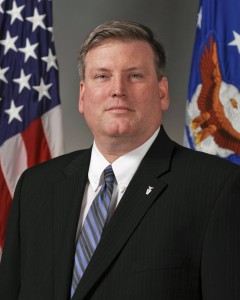 make an announcement as early as next week.
make an announcement as early as next week.
If our intelligence is correct, that would place Scott’s public announcement within about 48 hours of Brian Burns‘ last day as CISO at the Department of Veterans Affairs. It was also unusual for Veterans Affairs CIO LaVerne Council to announce Burns’ resignation only from his role as deputy director of the Interagency Program Office (IPO). One would think that if your CISO is moving to another government agency, you might address the fact that you are soon to be without a CISO.
While there is one other viable candidate known to The Situation Report to have been on Scott’s short list, Burns certainly has the chops and the background to be a serious contender.
Burns first entered Federal service in 1997, after a 13-year stint in commercial IT. But his government resume is impressive: He’s held senior IT positions at the Department of Defense, Department of the Air Force, Department of the Navy, Department of Education, Department of the Interior, Department of Health and Human Services, Department of Treasury, and the Internal Revenue Service.
Will Burns be the first Federal CISO? I think there’s a better than 50-50 chance he’s the chosen one.
Veterans Data Breach Report
A VA lawn maintenance worker in Bay Pines, Fla., recently came upon a small pile of documents sitting on the lawn outside the VA facility where he worked. Turns out the papers were a Housing and Urban Development Veterans Affairs Supportive Housing (HUD VASH) Veteran contact list.
The employee responsible for leaving the documents on the lawn has been disciplined, according to the VA report on the incident. However, a privacy violation memo was issued and 103 veterans were notified that their personal information was involved.
Veterans’ personal data seems to be in constant danger at VA, from the lawns in front of facilities to even the highways. Last month, the VA’s Data Breach Core Team opened an investigation into a VA employee who left an envelope full of unapproved claims, billing documents, and tort claims information on the top of a car. The employee then drove off and went home.
The documents were found by an unknown citizen spilled across a section of highway nowhere near the VA facility. The VA sent 28 veterans an offer of free credit protection services.
Of course, things could be worse. A VA facility in Hampton, Va., lost three encrypted hard drives in April. As of the latest security incident report, they remain unaccounted for. VA is not concerned about the drives because they were encrypted. In addition, there were two other similar incidents that took place during the same reporting period, but VA left them out of the report “because of repetition.”
Shadow Cloud
Should Burns get the nod for the Federal CISO post, he will have his hands full when it comes to gaining control of unauthorized government cloud services.
One of my remote Silicon Valley listening posts recently detected a serious disturbance in the Federal cloud computing force. A recent assessment of a major government agency “with very strict cloud usage policies” uncovered more than 3,000 “unique, unsanctioned cloud services” that were being accessed routinely over a three-week period. Some of the things discovered included private storage devices that were used for backing up data, and “hundreds of risky data sharing, collaboration, and social media sites.”
Recover Mission-Critical Systems: Back up, store, & recover IT
Look Who’s MeriTalking: Akamai’s Fran Trentley
MeriTalk caught up with Fran Trentley, the vice president for Global Security and Government Services at Akamai, during the 2016 Akamai Government Forum in Washington, D.C.
The Weekend Reader – May 27
Data Breaches Cost Health Care Industry $6.2 Billion
 Data breaches are costing the health care industry an estimated $6.2 billion, with 89% of organizations represented in a new study by the Ponemon Institute having experienced a data breach in the past two years and 45% reporting more than five breaches in the same time period. Fifty-one percent blamed a lack of vigilance in ensuring their partners and other third parties protect patient information as a top reason for their vulnerability, and 44% say it’s due to a lack of skilled IT security practitioners. “In the last six years of conducting this study, it’s clear that efforts to safeguard patient data are not improving.“
Data breaches are costing the health care industry an estimated $6.2 billion, with 89% of organizations represented in a new study by the Ponemon Institute having experienced a data breach in the past two years and 45% reporting more than five breaches in the same time period. Fifty-one percent blamed a lack of vigilance in ensuring their partners and other third parties protect patient information as a top reason for their vulnerability, and 44% say it’s due to a lack of skilled IT security practitioners. “In the last six years of conducting this study, it’s clear that efforts to safeguard patient data are not improving.“
Marketers Target Students Through Online Learning
 Students are directed to go online for schoolwork, and corporations are reaping the benefits by subjecting these students to targeted marketing. “Parents are very concerned about how their children’s personal data is being outsourced to ed tech companies, who are using the data for commercial purposes and tracking them online,” said Leonie Haimson, co-chair of the Parent Coalition for Student Privacy. For example, Google and Facebook are widely used by schools and both “spend millions of dollars to influence lawmaking and keep regulation at bay,” said the report.
Students are directed to go online for schoolwork, and corporations are reaping the benefits by subjecting these students to targeted marketing. “Parents are very concerned about how their children’s personal data is being outsourced to ed tech companies, who are using the data for commercial purposes and tracking them online,” said Leonie Haimson, co-chair of the Parent Coalition for Student Privacy. For example, Google and Facebook are widely used by schools and both “spend millions of dollars to influence lawmaking and keep regulation at bay,” said the report.
Politics Stands in the Way of IT Modernization, Officials Say
 “We can start talking politics and we still don’t get where we need to go.” Committee members said they were disappointed and baffled over the degree of outdated technology in Federal agencies, some in mission critical systems. A major concern was the use of 8-inch floppy disks in DOD systems, as 3.2 million disks would equal just one flash drive. One congressman questioned whether such outdated technology could remain a secure means of storing classified data.
“We can start talking politics and we still don’t get where we need to go.” Committee members said they were disappointed and baffled over the degree of outdated technology in Federal agencies, some in mission critical systems. A major concern was the use of 8-inch floppy disks in DOD systems, as 3.2 million disks would equal just one flash drive. One congressman questioned whether such outdated technology could remain a secure means of storing classified data.
CMS Release of Medicare Data Sets Includes Standardized Payment Amount
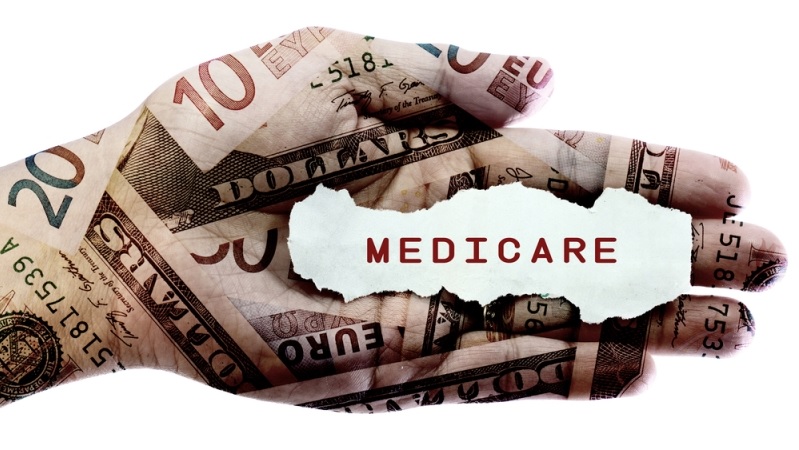 The information was part of the third annual release May 5 of the Physician and Other Supplier Utilization and Payment public use data. The data set contains information for more than 986,000 health care providers who received more than $91 billion total in Medicare payments in 2014. The Obama administration has directed CMS to prepare these public data sets in an effort to make the health care system more transparent to patients, doctors, and consumers.
The information was part of the third annual release May 5 of the Physician and Other Supplier Utilization and Payment public use data. The data set contains information for more than 986,000 health care providers who received more than $91 billion total in Medicare payments in 2014. The Obama administration has directed CMS to prepare these public data sets in an effort to make the health care system more transparent to patients, doctors, and consumers.
The Federal IT Papers–Part 2
 MeriTalk is running a series taken from a book-length work authored by a senior Federal IT official currently working in government. In this installment, the writer says: I think that the best starting point is in architecture because, “If you don’t know where you are going, any road will take you there.” I worry that the way we have run enterprise architecture has been an exercise in futility. It asks, what do you have now, what are you aiming for, and what is the plan to get there?
MeriTalk is running a series taken from a book-length work authored by a senior Federal IT official currently working in government. In this installment, the writer says: I think that the best starting point is in architecture because, “If you don’t know where you are going, any road will take you there.” I worry that the way we have run enterprise architecture has been an exercise in futility. It asks, what do you have now, what are you aiming for, and what is the plan to get there?
Are Candidates Concerned About Cyber?
As the 2016 election grows closer, IT pros are wondering when the Presidential candidates will tackle ongoing cyber security concerns and questions. CBS News reports, “Fifty-five percent of information security professionals believe cyber security should be a key issue in the 2016 election.” But is it?
Blue Coat’s Chief Operating Officer, Michael Fey, prompts five cyber questions each candidate should consider.
The Situation Report: 3.1 Billion Reasons Government IT Will Remain Outdated Into 2017
$3.1 Billion Modernization Fund on Life Support
Bottom line: My Capitol Hill listening post has picked up strong signals that the White House’s proposed $3.1 billion IT Modernization Fund has but a 50-50 chance of finding its way into legislation this year.
Sources say the current political climate, along with presidential election politics, makes it highly unlikely that the revolving capital fund will find its way into the appropriations process. Even if the fund makes it into a bill, sources say Ohio Gov. John Kasich has a better shot at winning the Republican nomination for president than Federal CIO Tony Scott has of actually seeing the $3.1 billion materialize.
And that’s a shame, because reports coming from our Office of Management and Budget observation posts indicate that Scott—who’s knee-deep in transition planning at the moment—has pegged the cost of replacing all of government’s legacy IT systems at the full $3.1 billion mark.
The pair of wild cards in this hand are Reps. Jason Chaffetz, R-Utah, and Will Hurd, R-Texas. Chaffetz, chairman of the House Oversight and Government Reform Committee, gave off strong signals at the May 25 hearing on legacy IT modernization that he’s “warming up” to the idea of a revolving capital fund. And while Hurd, chairman of the House IT subcommittee, has supported the idea from the start, our San Antonio listening station reports the congressman faces an uphill re-election battle and may not be around to help champion the fund.
The Situation Report intercepted a phone call this week from a recruiter working for Amazon Web Services. Apparently, the company is planning to hire a vice president for its U.S. Public Sector business that will report directly to Teresa Carlson, AWS’ current vice president of worldwide public sector.
Initial reports raised questions about Carlson’s future plans. But our sources report that she is no longer in danger of Jeff Bezos’ public relations Siberia after a brief incident a while back involving an on-the-record quote provided to a reporter without permission. The new position is simply a response to AWS’ solid growth in government.
18F’s New Procurement Officer
Last week, we learned that the General Services Administration decided to move a contracting officer from the Federal Acquisition Service (FAS) to its newly established Technology Transformation Service. Sounds like a great idea, and the Federal IT media largely bought it as just another fascinating and innovative move to support all of the new innovators at 18F who are busy working on wildly innovative websites.
Fine.
But our remote listening post operating in the vicinity of Room 5340 of GSA’s Washington, D.C., headquarters building has picked up reliable reports that the new contracting officer position has more to do with providing 18F air cover for the coming assault by the GSA inspector general and an upcoming “beating” in June by the Government Accountability Office. Accordingly, the new contracting officer has their hands full making sure there are no illegal contracting activities in place when those two reports—and their corresponding congressional hearings—hit the street in June.
18F’s State & Local Loophole
There’s been a lot of talk recently about the GSA’s digital consulting arm, 18F, and its newly launched state and local government IT practice. Many observers point to what is clearly illegal—it’s against the law for GSA and 18F to do work directly for state and local governments, except for programs that fall under the handful of Cooperative Purchasing Program schedule contracts.
But The Situation Report has debriefed a longtime GSA mole, who said GSA is using a simple scheme to get around those restrictions and entangle 18F’s front-end tentacles in as many places as possible before the change of administrations. According to our source, GSA Administrator Denise Turner Roth has come up with an ingenious plan: institutionalize 18F digital services into all Federal grants to state and local governments. Under that model, 18F isn’t working directly for state and local governments, but for the Federal agency responsible for issuing the grant.
Holes in Obama’s Cyber Net
President Obama’s Executive Order 13694, issued in April 2015, declared a cybersecurity emergency due to the volume of cyberattacks against the U.S. originating in foreign countries. The order was viewed at the time as the ammunition the country needed to go after these hackers, many of whom are believed to be acting on behalf of foreign governments.
But a newly released report from the Treasury Department dated Oct. 1, 2015, provides a surprising assessment of the order’s impact on national cybersecurity during its first six months. The emergency powers invoked by Obama cost the government at least $760,000 (mostly in Federal salaries) but failed to identify a single hacker to target with sanctions.
“No entities or individuals have been designated pursuant to E.O. 13694,” wrote Treasury Secretary Jacob Lew.
Tin Cupping Doesn’t Work: Why We Desperately Need an IT Modernization Fund
GAO this morning confirmed what anyone who has looked around the Federal government knows all too well–we are trying to embrace a 21st century digital government using antique (some would go so far as to say “fossil”) computer systems. GAO just completed a yearlong review of just how bad things truly are, and oh boy, are they bad.
GAO reports that the Federal government spends the majority of its $80 billion technology budget on maintaining and operating legacy systems—systems that are extremely vulnerable, often unprotectable from hacks and exfiltrations. And don’t even mention how much all this old stuff costs to maintain. GAO told Congress that millions of Federal dollars can be saved just through consolidating data centers throughout the country. To date, agencies have closed more than 3,000 data centers resulting in savings of $2.8 billion.
Some agencies reported 3,427 IT staff employed just to maintain legacy-programming languages, such as COBOL (1,085) and Fortran (613). This does not even include DoD or Labor because they could not estimate the number of lines of legacy code.
My favorite example from GAO is how DoD is using a 1970s-vintage IBM Series 1 mainframe to store nuclear weapons alert notifications. Sure, the system is a backup, and yes, Terry Halversen told Congress that it actually works pretty well and cannot be hacked. I guess the Chinese don’t have anyone old enough to figure out how to get access to it.
So what should agencies do to solve a problem that Federal CIO Tony Scott says is worse than the Y2K challenge?
Well, Scott said something else to Congress that sums up the situation brilliantly: “When you find yourself riding a dead horse, you should dismount.”
His idea–let’s get off the old horses by establishing an IT Modernization Fund to be used as seed corn to accelerate the agencies off of fossil computers. To ensure good money is not thrown after bad, require the agencies to make a hard and fast business case to an independent panel of experts before they get any funding. Then track their success or failure closely and with full transparency.
It’s interesting because this is not a new idea. Vivek Kundra, the previous Federal CIO, called for something very similar in his seminal 25-Point Plan for IT Modernization. And the first versions of FITARA, which was successfully voted out the Oversight Committee and cleared the floor of the House of Representatives by unanimous consent, contained a similar idea that unfortunately died when the legislation went over to the Senate.
Even Jason Chaffetz, R-Utah, chairman of the Oversight Committee and a tough guardian of agency spending, said he was “warming to the idea” of such a fund.
Good. We need the IT Modernization Fund. Going agency by agency and tin-cupping is simply not going to get the job done. How else are we going to get basic cybersecurity embedded across the Federal government?
Richard Beutel is a Principal at Cyrrus Analytics.
The Sky’s the Limit: Best Practices for a Surprise-Free Cloud Move
The pressure is on for agencies to make the move to cloud – just 13 percent of Feds say they can deploy new systems as fast as required[1].
However, agencies know cloud is here to stay. When it comes down to it, Feds are optimistic – 70 percent say increasing their cloud adoption pace will improve IT’s ability to innovate[2].
That said, flying through the cloud procurement process is no easy feat. Making the cloud move is proving to be more complex than expected – but with the right planning and strategic moves, Feds can ensure they undergo a surprise-free move.
It all starts with the basics. Agencies need to build their perfect cloud from the ground up. Whether it’s public, private, or hybrid cloud, agencies should first think about their goals, define what success looks like.
The devil is in the details. For example, do you have the staffing availability and skillsets to implement cloud and keep it running? Oftentimes, agencies skip right to hardware – when skillset should be a part of the initial conversation as well.
Expect the unexpected. What kind of performance and security does your agency need? Will you need backup protection for your data? How fast can your agency respond to an issue? Agencies must also consider unpredictable situations when making the move to cloud and choosing a cloud service provider. Keep in mind that data and applications are not all alike, each may have a different set of requirements.
Take only what you need. Agencies need to forecast what they need from their cloud, in terms of capabilities and other specs. Are you looking for data management? Flexibility? What’s best for some is not for others. A good cloud service provider will walk you through the key considerations.
Shop now, pay later. Given budget pressures, agencies often want to jump directly to pricing when tackling the cloud procurement process. But, this can backfire, as the agency can choose a solution that may not best fit their needs. Start by considering the needs of your applications and what it takes to achieve mission success – then move on to price evaluation.
ViON helps agencies make the right cloud move. We help you leverage the right architectures and capabilities to solve your business problems and achieve mission success. We’ll sit down and define success – identify the problems you need to solve. Then, we’ll design the cloud that’s best for you.
With a straightforward business model approach to cloud, we make sure you pay only for what you use – helping you maximize your budget for the best performing cloud. And, with 24/7/265 enterprise class support, professional, and managed services, we ensure you don’t have to make your cloud move alone.
And that’s the real silver lining.
This blog post was originally published here.
[1] “The Agile Advantage: Can DevOps Move Cloud to the Fast Lane?” MeriTalk, May 2015.
[2] “The Agile Advantage: Can DevOps Move Cloud to the Fast Lane?” MeriTalk, May 2015.
The Situation Report: Get Ready For Legacy Dustup On The Hill
FITARA Fallout
My Capitol Hill listening post decoded some interesting chatter this week taking place throughout the halls of the Rayburn House Office Building. That was where NASA landed its newest spacecraft—the Starship Incredulity—and unloaded one of the most expensive works of fiction ever written. NASA CIO Renee Wynn had the audacity to  report that not a single investment in the agency’s planned $731 million in technology programs is high risk. That didn’t go over well at all with one senior Federal official, who looked at NASA’s failing grade on the annual Federal Information Technology Acquisition Reform Act scorecard and said: “Look, if they’re not going to be honest then they’re going to get an F. It was that simple.”
report that not a single investment in the agency’s planned $731 million in technology programs is high risk. That didn’t go over well at all with one senior Federal official, who looked at NASA’s failing grade on the annual Federal Information Technology Acquisition Reform Act scorecard and said: “Look, if they’re not going to be honest then they’re going to get an F. It was that simple.”
Legacy Lashings
Get ready for another round of hard-hitting congressional questioning, this time about the government’s addiction to legacy IT systems that continue to drain billions of dollars of taxpayer money away from new investments and modernization accounts.
The House Oversight and Government Reform Committee plans to call Federal CIO Tony Scott, Defense Department CIO Terry Halvorsen, Health and Human Services’ Acting CIO Beth Killoran, and IRS Chief Technology Officer Terry Millholland before the full committee May 25 to answer for this epic waste of Federal IT dollars.
The Government Accountability Office’s auditor in chief, Dave Powner, will also make an appearance at the hearing—Federal Agencies’ Reliance on Outdated and Unsupported Information Technology: A Ticking Time Bomb. My advance scouts report that Powner’s revelations will certainly leave you guessing “is it live, or is it Memorex?”
The Weekend Reader – May 20
The Federal IT Papers–Part 1
 MeriTalk begins a series taken from a book-length work authored by a senior Federal IT official currently working in government. This is one part of an extensive, firsthand account of how IT decisions are made, the obstacles standing in the way of real change in government technology management, and what one career Federal IT employee really thinks about the way government does IT.
MeriTalk begins a series taken from a book-length work authored by a senior Federal IT official currently working in government. This is one part of an extensive, firsthand account of how IT decisions are made, the obstacles standing in the way of real change in government technology management, and what one career Federal IT employee really thinks about the way government does IT.
Space Agency’s FITARA Grade Baffles Lawmakers
 NASA plans to spend $731 million on major IT investments, but has not reported any of those programs as high risk. “You can’t manage these IT investments appropriately if you can’t acknowledge risk,” said Dave Powner, director of IT Management Issues at the GAO. Those with failing grades were not the only ones to receive criticism from the committee members.
NASA plans to spend $731 million on major IT investments, but has not reported any of those programs as high risk. “You can’t manage these IT investments appropriately if you can’t acknowledge risk,” said Dave Powner, director of IT Management Issues at the GAO. Those with failing grades were not the only ones to receive criticism from the committee members.
IG Uncovers Data Breach at 18F
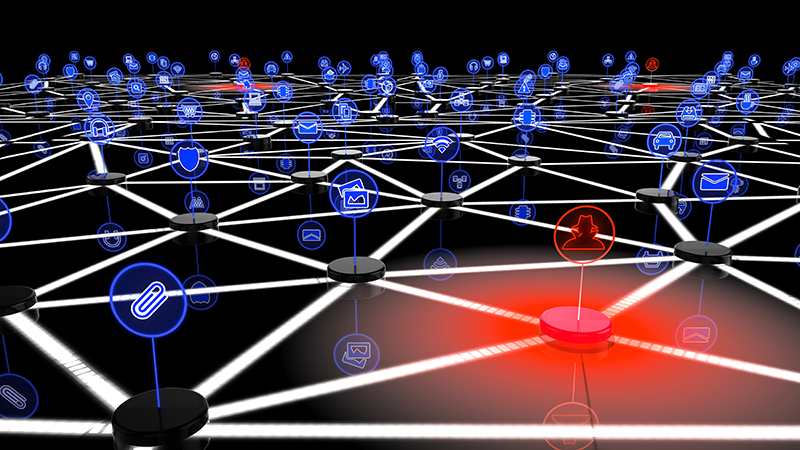 IG investigators became aware of the vulnerability and the data breach during their ongoing investigation of 18F financial management. The vulnerability stemmed from 18F’s use of the Slack instant messaging system in conjunction with the OAuth 2.0 authentication and authorization process. 18F supervisors are also coming under scrutiny for delaying the reporting of the vulnerability.
IG investigators became aware of the vulnerability and the data breach during their ongoing investigation of 18F financial management. The vulnerability stemmed from 18F’s use of the Slack instant messaging system in conjunction with the OAuth 2.0 authentication and authorization process. 18F supervisors are also coming under scrutiny for delaying the reporting of the vulnerability.
Industry Prods Cybersecurity Commission to Back Blockchain Tech, Insurance Market
 Industry executives urged the Federal government to do more to advance the use of blockchain technology to secure online financial transactions, and to get behind nationwide adoption of cybersecurity insurance. Although bitcoin is an anonymous network, IBM Fellow Jerry Cuomo advised the commission to support what is known as permissioned blockchain, which involves the use of blockchain in networks where the users are known and trusted. “Blockchain has tremendous potential to help transform business and society, but it’s so strikingly different from what people are used to that many business and government leaders are adopting a wait-and-see attitude,” Cuomo said.
Industry executives urged the Federal government to do more to advance the use of blockchain technology to secure online financial transactions, and to get behind nationwide adoption of cybersecurity insurance. Although bitcoin is an anonymous network, IBM Fellow Jerry Cuomo advised the commission to support what is known as permissioned blockchain, which involves the use of blockchain in networks where the users are known and trusted. “Blockchain has tremendous potential to help transform business and society, but it’s so strikingly different from what people are used to that many business and government leaders are adopting a wait-and-see attitude,” Cuomo said.
As IT Changes Health Care, CIOs Must Be Responsive
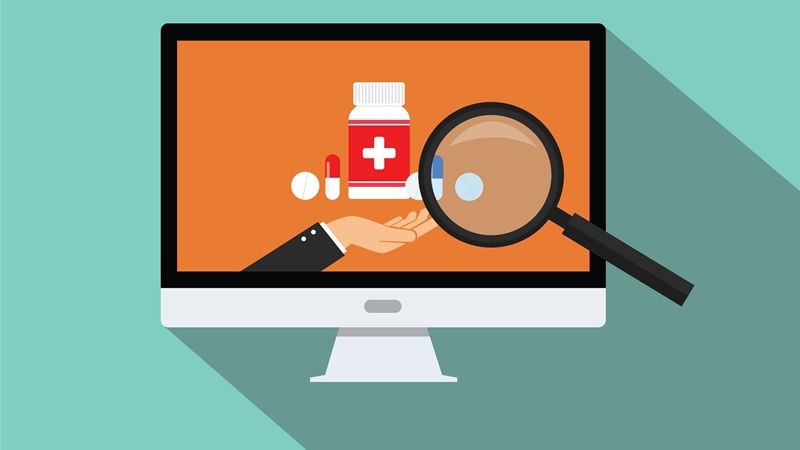 Dave Dimond of EMC said the challenge health care providers face has everything to do with meeting patient expectations in a world “where they want things, and they want them now.” A recent survey from Vanson Bourne found that 89 percent of health care providers say technology has already changed their patient expectations. With the health care sector moving rapidly toward value-based care–a model based on using data to improve outcomes while lowering costs–information management will be key for organizations that want to survive, Dimond said. IT is a resource that will be spread too thin without finding new ways to free up a CIO’s time to focus on the requirements of value-based care, such as predictive analytics.
Dave Dimond of EMC said the challenge health care providers face has everything to do with meeting patient expectations in a world “where they want things, and they want them now.” A recent survey from Vanson Bourne found that 89 percent of health care providers say technology has already changed their patient expectations. With the health care sector moving rapidly toward value-based care–a model based on using data to improve outcomes while lowering costs–information management will be key for organizations that want to survive, Dimond said. IT is a resource that will be spread too thin without finding new ways to free up a CIO’s time to focus on the requirements of value-based care, such as predictive analytics.
The Future of Policing: Wish You Were Here
Cloud Security – Silver Lining for Feds
FedRAMP is not accelerating the path to the cloud for Federal agencies as quickly as anticipated. But, recognizing potential saving opportunities and significant operational and efficiency benefits, Feds are ready to move. A research analyst at Deltek stated, “Fiscal 2016 will be a year when cloud spending picks up greater speed…”
It’s time to clear the most significant barrier to cloud adoption – security concerns.
Look Who’s MeriTalking: Rusty Pickens, Department of State
Rusty Pickens is the senior adviser for digital platforms at the Department of State. He spoke with MeriTalk at the 2016 Akamai Government Forum about the evolving technology components of the department’s digital diplomacy efforts.
The Cost of Cloud: Covering All Your Bases
To score a home run, you have to cover all the bases. But getting from start to finish is harder than it looks. For Federal agencies, hitting IT out of the park is even more difficult due to budget constraints, lengthy procurement processes, and staffing difficulties.
And, as agencies continue to spend 79 percent of IT budgets – or $62 billion annually – on legacy systems, the window for innovation decreases every day.
Federal mandates like FITARA are stepping up to the plate, and Federal IT leaders are looking to cloud migration as a key to increased efficiency, innovation, and cost savings. Feds point to the opportunity to realize an estimated $12 billion in potential cloud savings through cutting duplicative and wasteful spending.
But here’s the catch – 73 percent of Feds say budgets hold them back from updating legacy systems.
So how can agencies stay ahead of the curve?
Most agencies jump directly into price evaluation as the first step in the cloud procurement process. It is critical that agencies first identify cloud goals, ensure the right solution design – and then dive into cloud cost. For example, what mission challenges is your agency facing? What problems do you need to solve? What are your security needs?
Agencies also need to keep physical space and environmental factors in mind. Who needs access and how often? This area is often overlooked when considering cloud options and planning cloud costs. What are the performance and availability requirements? What kind of SLA’s do you need? How fast will the cloud provider respond if there is an issue?
Last but not least, agencies must determine whether they have the right skills on board – or alternatively, be prepared to leverage outside resources to manage their cloud infrastructure.
When it comes to overall price, many assume public cloud is cheaper than private. This is not always the case.
Typical public cloud implementations meter charges based on an input/output (I/O) rate. With private cloud, the necessary network infrastructure is included – and there will rarely be additional charges based on fluctuating I/O rate – which means more predictable costs.
Plus, private cloud storage can be customized. Flash, SATA, thin provisioning, and many other techniques can be leveraged to control costs and drive performance. Often as the storage environment scales up, or as the performance requirements increase, private cloud will be a better choice. The key is to define requirements completely, then build the right solution from there.
With the private cloud environment, qualified CSPs can tell agencies the most they’ll ever spend, cap that number, and give the CIO the opportunity to block additional spending. This is typically not the case with public cloud, where forecasting costs is more difficult – and there are often significant charges involved if an agency wants to remove its data.
At ViON, our cloud pricing model provides agencies with the option of adding more capacity – but still only pay for what they use.
We help agencies balance cloud costs and data access/data sharing needs to identify the right option. We begin with defining the requirements, considering all factors impacting costs, and identifying which cloud model is right (and most cost effective) for your agency. You can deliver more flexible, responsive IT services to your teams, improve citizen service, and enhance visibility, control, and efficiency.
And that’s the real silver lining.
This blog post was originally published here.
The Weekend Reader – May 13
Device Makers, Telecoms Face Competing Government Demands on Privacy
The FCC sent a letter to mobile carriers, citing “a growing number of vulnerabilities…that threaten the security and integrity of a user’s device and all the personal, sensitive data on it,” and asking how carriers address those vulnerabilities. The FTC simultaneously ordered eight manufacturers of mobile devices to respond to a detailed set of questions about how they update the devices’ security protections and keep customers informed of those updates. Terrorist groups rely on encryption, FBI Director James Comey said, suggesting–as the government argued throughout its attempt to compel Apple to help crack security on an iPhone used by the San Bernardino shooters–that law enforcement agencies believe they are entitled to assistance from tech companies.
Can Artificial Intelligence Help Government Serve Citizens?
 At the NASCIO Mid-Year Conference in Baltimore last week, Government Technology talked to state CIOs about whether cognitive computing can help them deal with the data deluge. Wisconsin CIO David Cagigal sees a definite role for technology that learns from citizen behavior to inform services and anticipate future needs.
At the NASCIO Mid-Year Conference in Baltimore last week, Government Technology talked to state CIOs about whether cognitive computing can help them deal with the data deluge. Wisconsin CIO David Cagigal sees a definite role for technology that learns from citizen behavior to inform services and anticipate future needs.
FDIC Officials Differ on What Constitutes ‘Major’ Data Breach

Menlo Park Police Join Federal Push for Open Data
 The local police department has signed on to a 2015 White House initiative that calls for boosting transparency to increase trust in communities. The Menlo Park Police Department joins 52 other law enforcement agencies around the nation, including San Jose, San Francisco, Vallejo and San Leandro, participating in the Police Data Initiative.
The local police department has signed on to a 2015 White House initiative that calls for boosting transparency to increase trust in communities. The Menlo Park Police Department joins 52 other law enforcement agencies around the nation, including San Jose, San Francisco, Vallejo and San Leandro, participating in the Police Data Initiative.
Georgia Attorney General Supports Federal Data Breach Standard
 Georgia Attorney General Sam Olens has come out in support of Federal data breach preemption as a more realistic way to ask companies to comply with regulatory requirements in the wake of a breach or data loss incident. His statement comes on the heels of California Attorney General Kamala Harris’ report that the burden on companies to comply with the patchwork of state data breach laws is too heavy, and that state laws should be harmonized to lessen that burden. Saying that “the day of benign neglect is gone,” Olens said companies that are lagging behind in putting reasonable security measures in place have no excuse.
Georgia Attorney General Sam Olens has come out in support of Federal data breach preemption as a more realistic way to ask companies to comply with regulatory requirements in the wake of a breach or data loss incident. His statement comes on the heels of California Attorney General Kamala Harris’ report that the burden on companies to comply with the patchwork of state data breach laws is too heavy, and that state laws should be harmonized to lessen that burden. Saying that “the day of benign neglect is gone,” Olens said companies that are lagging behind in putting reasonable security measures in place have no excuse.
A Look Ahead at the FITARA Scorecard 2.0
Congress next week plans to hold a hearing on how Federal agencies are doing in their adherence to the Federal Information Technology Acquisition Reform Act, known as FITARA, and the public will get its first look at the second round of agency grades.
The promise, of course, is that this second round of grades—the FITARA Scorecard 2.0—will somehow magically move the government from measuring their performance to changing their bad behaviors. That is not what is going to happen when the House Subcommittee on Information Technology meets May 18.
The FITARA Scorecard is undoubtedly a valuable tool for measuring agency progress in adhering to the letter of the law. It measures progress across data center consolidation, IT portfolio savings, incremental development, and risk assessment transparency. But let’s not forget that this is self-reported data that goes into FITARA Scorecard grades. Sure, most agencies got “Ds” and a handful scored well, but the scorecard must evolve if it is to become a true tool of transformation in government.
Moving forward, Congress must insist that the grades provided in the FITARA Scorecard are based on a much broader set of data points. Congress needs a clearer picture on the progress of CIO authority enhancements, as not all CIOs across government enjoy the same influence.
For example, how far has FITARA come in standardizing CIOs’ influence and control over IT investments, including the ever-present shadow IT that puts agency networks and data at risk? Are agencies leveraging governmentwide or agencywide contracting vehicles that would eliminate costly duplication? What kind of progress are agencies making on moving legacy systems to a modern cloud infrastructure and do agencies have a strategic road map in place to measure progress? And are agencies keeping tabs on the ratio of legacy IT spend and new IT investment? FITARA needs to be able to tell Congress how that imbalance is being addressed.
These are just some of the areas where FITARA’s scorecard could be improved. But by improving the data collection that goes into formulating the grades, we can ensure that those grades not only become more meaningful, they will actually become a tool for effecting real change.
Why Congress Needs to Take a Long, Hard Look at 18F
How many Presidential Innovation Fellows does it take to type 18F?
That may not sound like a serious question, but I can guarantee the anger of taxpayers and lawmakers will be real when they learn that it took a small team of designers from the General Services Administration’s 18F an entire weekend to come up with the following change to the digital service team’s logo.
 It gets worse. This so-called weekend “brandathon,” as it came to be known, began with an organization-wide workshop on 18F’s core values. “After this workshop, several design studios, and hours of work, the branding team had an initial set of deliverables to share with the rest of 18F,” wrote 18F designers Kate Garklavs and Jennifer Thibault in a mind-numbing 826-word blog posted Thursday to the 18F website.
It gets worse. This so-called weekend “brandathon,” as it came to be known, began with an organization-wide workshop on 18F’s core values. “After this workshop, several design studios, and hours of work, the branding team had an initial set of deliverables to share with the rest of 18F,” wrote 18F designers Kate Garklavs and Jennifer Thibault in a mind-numbing 826-word blog posted Thursday to the 18F website.
This is what 18F calls “agile branding.” The weekend design “brandathon” took place last August—nine months ago.
Eric Ronne, one of 18F’s digital designers who participated in the summer work session, summed up the experience as follows: “At 18F we’re always changing and improving government interactions for our users. We iterate constantly here, and now we’ve iterated on our logo, too,” he said. “Our goal was to refresh the mark while nodding to the past, to create a straightforward update that’s accessible, bold, modern, and flexible.”
As if spending a weekend of design hours and nine months of internal back-and-forth discussions wasn’t enough to come up with this epic feat of Photoshop 101, the well-compensated digital branding innovators at 18F also spent time creating a collection of images featuring the new logo and inspirational messaging, “the optimism of which is central to our brand,” according to the blog post.
 “These images, which team members use as desktop art, weren’t exactly the highest priority ‘need’ item, but they were a fast way to show the team how the new system could begin to flex in more exciting ways than just templates,” wrote Garklavs and Thibault.
“These images, which team members use as desktop art, weren’t exactly the highest priority ‘need’ item, but they were a fast way to show the team how the new system could begin to flex in more exciting ways than just templates,” wrote Garklavs and Thibault.
And this epic waste of tax dollars isn’t over. “We plan to create infographic templates for our social media accounts. And eventually, we’ll restructure and restyle our website, another outfit that we’ve outgrown since we started in March 2014,” they wrote.
I’m all for digital services in government, and for improving government services through technology and innovation. But the amount of time, effort, and money that GSA dedicated to changing a font in Photoshop is an obscene misappropriation of government resources. This type of maddening waste is exactly why so many observers in and out of government have come to question the purpose, mission, and value of 18F.
The innovators at 18F would be wise to “iterate” on something more difficult and of more importance to the American people. If they don’t start doing that soon, then the days of the 18F experiment in government are surely numbered.
The Situation Report: Silicon Valley Disconnect
Valley Girl
Gag me with a spoon, Erie Meyer. America’s self-described “foremost technologist named after a great lake…working on service delivery” at the U.S. Digital Service recently described in a Twitter post what her former career was really all about.
My job used to be getting as many clicks and as many dollars for those clicks as possible. I do not miss that.
— Erie (@Erie) May 9, 2016
Although there’s no serious Valley experience detectable in Meyer’s official bio, this issue is actually a very serious concern among those who have been critical of the new digital service stars recruited from Silicon Valley to help save government from its Luddite past. As the argument goes, Todd Park—the digital service recruiter-in-chief—has staffed the government’s digital service teams with a bunch of wide-eyed techies who have been unable to divorce themselves from their former Silicon Valley mission of designing click-bait, or as GitHub Evangelist Ben Balter put it, working to “implement the button for those clicks.”
So far, “implementing buttons” seems to be right in the USDS sweet spot. Consider their accomplishments: A College Scorecard website for the Education Department; a “revamped” online presence for the Federal Election Commission; and a Web template designer for static government websites. There have been others, but nothing revolutionary.
This is a big problem for the USDS at the White House and its sister organization, the General Services Administration’s 18F. Both organizations should be bracing for a major slap in the face from the Government Accountability Office, which is planning to release an audit of their progress to date. And The Situation Report has picked up strong signals that these particular digital audit pages will make a loud thud when they fall on the desk of U.S. Chief Information Officer Tony Scott at the Office of Management and Budget.
Deep Throat Meets Demosthenes
On May 16, MeriTalk will begin publishing The Federal IT Papers—An Exclusive Insider Account of IT Decision-making Gone Wrong. This weekly series of stories is based on a book-length work by a current senior Federal IT official who goes by the pseudonym Demosthenes—a great orator in Ancient Greece, and the name chosen by Valentine Wiggin in Ender’s Game. Our author insisted on anonymity due to a fear of reprisals.
 In our first installment, Demosthenes takes issue with the government’s infatuation with the U.S. Digital Service and the way in which career Federal IT workers are treated.
In our first installment, Demosthenes takes issue with the government’s infatuation with the U.S. Digital Service and the way in which career Federal IT workers are treated.
“The problem with the USDS is that they make all these promises and have cachet. They are in the West Wing after all,” the author wrote. “When they recruit people, the mind-set coming in is that everyone who was working in Federal IT before I got here is shit. As a result they get rid of everyone who knows anything.”
In one case, a USDS specialist recruited from Silicon Valley by an agency CIO went so far as to undermine the CIO who hired them. The result? According to Demosthenes, the agency head decided it was time to get a new CIO.
“And now I see them embedding themselves in preparation for this next administration, and I can’t sit idly by and not speak up. Somebody has to pierce this bubble and say, ‘hey guys, thanks for importing a whole bunch of really smart people who don’t know the first thing about how to get shit done here. Thanks for bringing in a bunch of people who don’t value my contributions and don’t want to hear about what has worked and what hasn’t.’ ”
You can read more of The Federal IT Papers starting May 16.
Beyond Escape Velocity
Let’s make it three and go for the hat trick on digital services. My left coast listening post reports that it’s no coincidence that GSA’s latest innovation partnership in San Francisco will be located right next door to the West Coast 18F. My Market Street surveillance station has picked up strong signals that the so-called Superpublic Innovation Lab is part of GSA’s master plan to extend 18F’s presence both physically and politically—reaching a hiring velocity that makes it virtually impossible for the next administration to escape the pull of government digital services.
GAO Visits VA
My Vermont Avenue surveillance station in Washington, D.C., has noticed unusual Government Accountability Office activity at the headquarters of the Department of Veterans Affairs. Sources tell The Situation Report that auditors are interested in VA’s progress on identity theft prevention. In particular, investigators want to know how far VA has come in eliminating the use of Social Security numbers as a key identification number for veterans.
The Weekend Reader – May 6
Cybersecurity Goals to Guide Federal Software Spending
 Evolving requirements to greatly improve Federal protection of information technology resources will shape Federal software spending. In fact, Federal cyberprotection goals should be augmented and significantly modified, according to recent studies of the Federal market. The linkage between increased Federal investing in cybersecurity and the requirements for bolstering IT protection are portrayed in two newly released reports.
Evolving requirements to greatly improve Federal protection of information technology resources will shape Federal software spending. In fact, Federal cyberprotection goals should be augmented and significantly modified, according to recent studies of the Federal market. The linkage between increased Federal investing in cybersecurity and the requirements for bolstering IT protection are portrayed in two newly released reports.
U.S. Chief Data Scientist: Entrepreneurs Should do a Tour of Duty in Government
 There’s no question that the U.S. government has collected an incredible amount of data. Whether for things like the Census, housing, agriculture, transportation, or health care, Federal agencies have accumulated data from around the country. In the past seven years, the White House has made efforts to leverage more technology at the Federal level.
There’s no question that the U.S. government has collected an incredible amount of data. Whether for things like the Census, housing, agriculture, transportation, or health care, Federal agencies have accumulated data from around the country. In the past seven years, the White House has made efforts to leverage more technology at the Federal level.
Microsoft’s CEO Explains Why His Company Sued the U.S. Government
 Microsoft surprised the world last month when it filed a lawsuit against the U.S. Department of Justice, alleging that the frequent practice of attaching gag orders to search warrants for customer data violates the U.S. Constitution.
Microsoft surprised the world last month when it filed a lawsuit against the U.S. Department of Justice, alleging that the frequent practice of attaching gag orders to search warrants for customer data violates the U.S. Constitution.
On Monday, CEO Satya Nadella told a group of tech luminaries why the company did so: Microsoft has a strong view on its privacy promises to users, and the company will fight to prevent government overreach that, in its view, compromises the principles of privacy.
Why Open and Frugal Should Be the Default for Government IT
 With public-sector information-technology projects at any level of government, one does not have to look too far to find examples of waste and worse. In the wake of a series of failed projects, Hawaii is auditing its last four years of IT spending. On the local-government level, it would be hard to find a better example of what can go wrong than New York City’s CityTime payroll-system project, abandoned after its costs ballooned from $63 million to $700 million amid mismanagement and outright corruption.
With public-sector information-technology projects at any level of government, one does not have to look too far to find examples of waste and worse. In the wake of a series of failed projects, Hawaii is auditing its last four years of IT spending. On the local-government level, it would be hard to find a better example of what can go wrong than New York City’s CityTime payroll-system project, abandoned after its costs ballooned from $63 million to $700 million amid mismanagement and outright corruption.
Tech Companies are Unlikely to Oppose Government Demands on Data Access
 Can other technology companies defy the government the way Apple did when asked to help U.S. investigators crack the code of iPhone 5C? Unlikely. Especially in jurisdictions where the governments may not be so benign in pursuing hidden material in electronic devices or data centers. Not EMC Corporation, the world’s largest data storage multinational.
Can other technology companies defy the government the way Apple did when asked to help U.S. investigators crack the code of iPhone 5C? Unlikely. Especially in jurisdictions where the governments may not be so benign in pursuing hidden material in electronic devices or data centers. Not EMC Corporation, the world’s largest data storage multinational.
The Situation Report: FirstNet Worries and VA’s Leadership Rumors
Public Safety Communications
Remember that $7 billion Congress allocated to help establish a nationwide public safety broadband network, known as FirstNet? Well, when was the last time 50 states agreed on anything?
My Reston, Va., listening post has picked up increasing concerns about FirstNet’s decision to adopt a centralized, controlled network. As any informed observer can imagine, each state’s emergency communications capabilities are based on separate networks and use vastly different technologies—although many still rely on Land Mobile Radios and, according to insider reports, have no plans to completely ditch their own autonomous LMR networks. And that’s a problem for FirstNet.
FirstNet has taken the position that state autonomy in network design decisions and management will jeopardize FirstNet’s ability to provide a network that meets its coverage and service goals.
“The governance model chosen by FirstNet is a federalized, centrally planned and directed network, bolstered by federal procurement practices that limit states to a consultative role,” according to a congressional analysis intercepted by The Situation Report. “A risk in choosing this model is that states may consider the federal presence excessive and cease to cooperate with FirstNet, jeopardizing the purpose of the network.”
But May is the month of proposals for FirstNet. Potential bidders will first be sending FirstNet officials capability statements followed by full proposals to build the network.
However, my mobile listening post outside of 445 12th Street SW, Washington, D.C., has picked up strong signals that the FCC is working hard on opt-out plans.
“As I have suggested to the board a number of times with all due respect, FirstNet isn’t the foremost thing on the minds of many governors when dealing with fiscal crises and natural disasters and things like that,” said former Vermont governor James Douglas during the last FirstNet board meeting in March.
VA’s New CISO?
 My listening post on Vermont Avenue in Washington, D.C., tuned into the rumor mill this week and discovered some interesting, yet unconfirmed, reports of a new deputy assistant secretary for cybersecurity at VA.
My listening post on Vermont Avenue in Washington, D.C., tuned into the rumor mill this week and discovered some interesting, yet unconfirmed, reports of a new deputy assistant secretary for cybersecurity at VA.
Talk at VA is that Dominic Cussatt, the deputy director for cybersecurity policy in Terry Holvorsen’s office at the Defense Department, is packing his bags to take the cybersecurity gig at VA. Cussatt would replace Ron Thompson, who’s been serving as interim CISO since Veterans Affairs CIO LaVerne Council ordered Brian Burns to “redirect his exclusive focus on VA’s role in the Interagency Program Office (IPO).”
Truth or Dare?
My remote sensing system on Capitol Hill has picked up chatter that some “analysts” on the Hill are daring lawmakers to do away with traditional polygraph examinations for security clearance holders in favor of the intelligence community’s new Continuous Evaluation program, which relies on constant monitoring of social media and other forms of big data analytics.
If Congress—which isn’t subject to a polygraph examination—does consider eliminating the polygraph, the result could be new business for the IT industry.
“What emerging technologies show the most promise in providing more objective measures to detect lying?” asked the congressional researcher. “Should additional resources be directed toward encouraging such technologies?”
That said, the result could also be a boom in business for foreign intelligence services.
Intercept a situation report? Email me at dverton@meritalk.com or DM via Twitter Follow @DanielVerton
The Great Cloud Debate: Public vs. Private – and the ViON Hybrid Model
Today, just 13 percent of Feds say they can deploy new systems as quickly as required. And, it’s no secret agencies are being pushed to make the move to cloud – whether it’s data center consolidation initiatives, flexible performance to meet constituents’ on-demand requests, simply the desire to increase overall IT efficiency, or the demands of the current regulatory environment.
So where do agencies start as they evaluate their cloud options? Enter the Great Cloud Debate.
For most, choosing the right cloud is more than a black-and-white decision. In fact, despite cloud growth goals and Fed initiatives, cloud adoption is currently only around 4% of federal workloads. Concerns about contract lock in, application readiness, data security, data custody, and legacy buying processes are commonly cited as barriers to cloud adoption.
Before making a cloud decision, agencies need to start with the basics – and understand why they want or need cloud. From accelerating the move to an as-a-Service (aaS) consumption model to maximizing budgets to enhancing faster time-to-value, agencies need to define what their factors are for critical mission success and frame their move to cloud into that context.
When it comes down to public vs. private cloud, direct comparison is nearly impossible. The choice boils down to which cloud is the right answer for the agency’s unique mission, challenges, and workload requirements. Issues to consider include performance requirements, availability, security, data custody and control, access patterns, support requirements, available internal skill-sets, speed of deployment requirements, and scalability.
Private cloud is often the best cloud option for Federal agencies. Seventy-five percent of Feds want to migrate more services to cloud, but are concerned about retaining control over their data. Further, agencies estimate 32 percent of their data can’t be moved to cloud due to security or data sovereignty issues.
Private cloud offers security, accelerated performance, availability – and importantly, but often overlooked – can be a means to eliminate re-architecting applications to fit into a cloud business model. Agencies also retain full control of their data. Public cloud promises accelerated deployment, maximum scalability, and simplified acquisition.
That said why not have the best of both worlds?
Hybrid cloud models address agencies’ main concern for data security, availability, and control, and still enable high performance and flexibility. By placing data in a private, hosted environment and connecting just the compute side to a public cloud ensures data is secure – putting agencies’ nerves at ease. But, the agency retains control of the data and never, for example, needs to pay a fee to remove it from the cloud environment.
ViON’s hybrid cloud model enables agencies to experience the benefits of public and private cloud, addressing key concerns of agencies as they approach the cloud procurement process – security, availability, scalability, and cost.
Build Your Cloud, Your Way.
We give agencies a system with a floor and ceiling customized by their needs and budget.
IT teams can select best-of-breed infrastructure elements, customized to deliver the availability and performance required – vs. “take it or leave it” public cloud configurations.
And, they can add capacity – scaling up or down as required to meet constituents’ on-demand needs, only pay for what they use, and retain full control over their data. That’s the real silver lining.
This blog post was originally published here.
Learn More:
Business of Cloud eBook
ViON Agile Cloud Solution Portfolio


